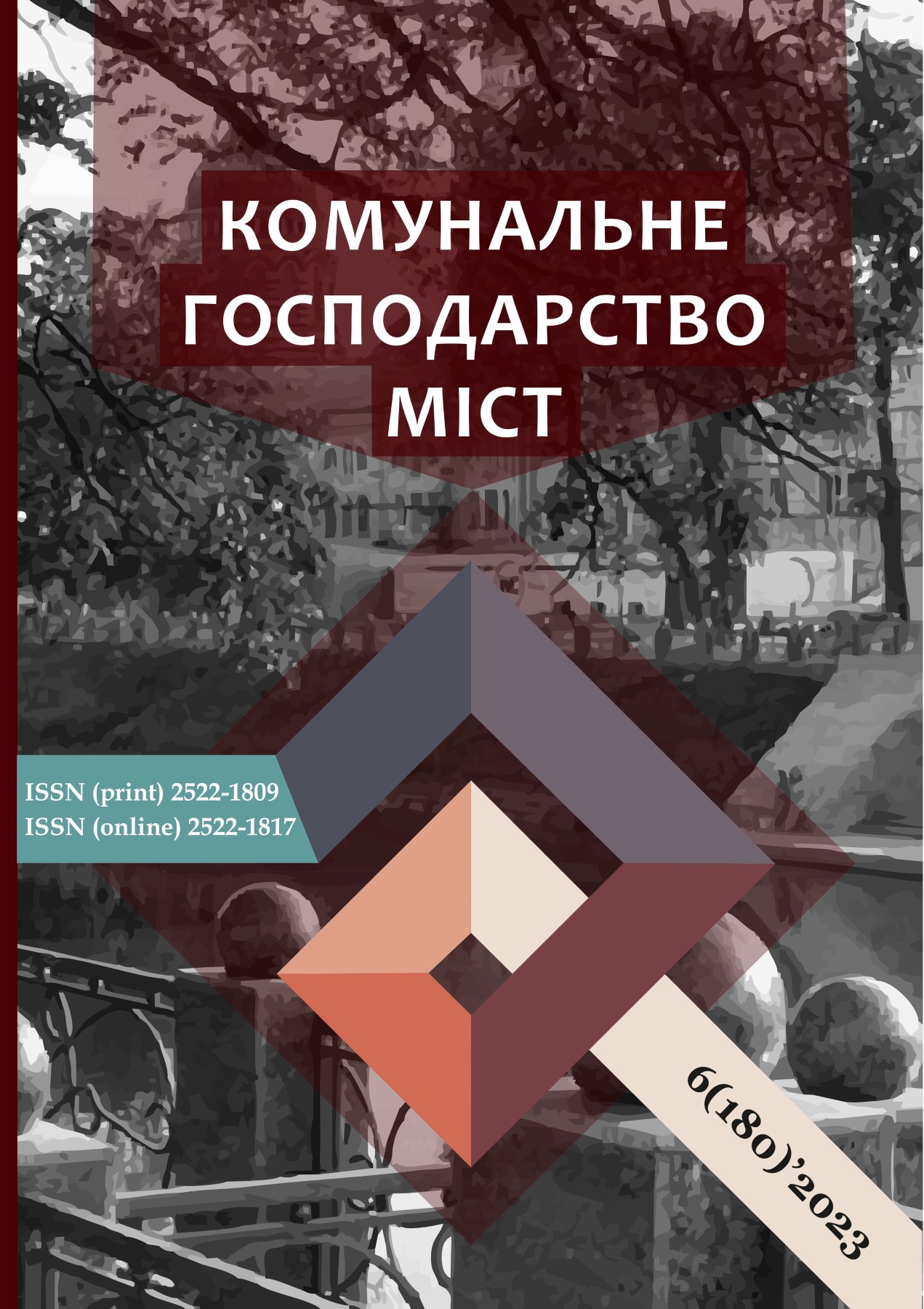METHODS AND MODELS FOR EVALUATING THE LEVEL OF REAL ESTATE USE AT THE REGIONAL LEVEL
DOI:
https://doi.org/10.33042/2522-1809-2023-6-180-92-97Keywords:
spatial provision, use of real estate, method, models, evaluation, land use, information supportAbstract
In the conditions of transformational processes, determined by the inhibition of the development of land relations, a decrease in their effectiveness, and a reduction in the level of use of real estate objects at the regional level, there is a need to rethink approaches to creating a quantitative basis for decision-making through the application of methods and evaluation models. In this context, it is crucial to highlight the importance of applying appropriate methods to assess the factors influencing the level of real estate use at the regional level, with a particular emphasis on expert and analytical methods. Spatial, functional, investment, and environmental factors affecting the use of real estate are evaluated based on these methods.
As a result of the research, the methods and models for real estate use processes at the regional level are proposed. It made it possible to form a mathematical basis and identify the appropriate tools for developing a method of assessing the level of real estate use and creating a quantitative basis for developing measures to improve the efficiency of its use at the regional level.
By employing the expert evaluation method, an analysis of real estate utilisation indicators at the regional level is conducted. This analysis enables the formation of a concrete quantitative basis for further developing an appropriate evaluation method. It is noticeable that this approach made it possible to identify and evaluate the current situation and also to create the basis for forecasting future indicators of real estate use.
In addition, mathematical modelling is used for detailed data analysis and determination of relationships between various factors affecting the use of real estate. It allowed us to understand which factors have the most significant influence on the efficiency of real estate use and the order of their interaction.
As a result of the study, scientifically based recommendations on increasing the efficiency of real estate use were developed. These recommendations, based on objective data, consider all aspects affecting the problem, making it possible to make more accurate and informed decisions regarding the optimisation of the use of real estate in the regions.
References
Petrakovska, O., & Lizunova, A. (2009). Urban planning in private property conditions in Ukraine. In F. K. Christensen, M. Tophøj Sørensen, S. H. Mørup, & C. Aunsborg (Eds.), Book of abstracts of the Third Annual Conference of the International Academic Association on Planning, Law and Property Rights (PLRP) (No. 2008-16 ed., Vol. Publication Series, Department of Development and Planning, Article 153). Technology, Environment and Society, Department of Development and Planning, Aalborg University. Retrieved from https://vbn.aau.dk/ws/portalfiles/portal/16965181/planninglaw2009-book-of-abstracts.pdf#page=91
Rizos, C. (1997). Principles and Practice of GPS Surveying: Monograph 17. School of Geomatic Engineering, University of New South Wales. Retrieved from https://www.sage.unsw.edu.au/sites/sage/files/SAGE_collection/MonographSeries/mono17.pdf
Larsson, G. (1991). Land Registration and Cadastral Systems: Tools for Land Information and Management. Longman Scientific and Technical.
Nesterenko, S., Mishchenko, R., Shchepak, V., & Shariy, G. (2020). Public Cadastral Maps as a Basis for a Construction of the Building General Layout. In V. Onyshchenko, G. Mammadova, S. Sivitska, & A. Gasimov (Eds.), Proceedings of the 2nd International Conference on Building Innovations (ICBI 2019) (pp. 161–169). Springer, Cham. DOI: 10.1007/978-3-030-42939-3_18
Pieri, C., Dumanski, J., Hamblin, A., & Young, A. (1995). Land Quality Indicators. World Bank Discussion Paper 315. The World Bank. Retrieved from https://citeseerx.ist.psu.edu/document?repid=rep1&type=pdf&doi=645077aacaa7b4cbe76386b00181c9547869061f
Tregub, M., & Trehub, Y. (2015). Substantiation of land management methods of industrial cities. In G. Pivnyak, V. Bondarenko, & I. Kovalevska (Eds.), New Developments in Mining Engineering 2015: Theoretical and Practical Solutions of Mineral Resource Mining (1st ed., pp. 449–452). CRC Press. DOI: 10.1201/b19901
Gubar, Yu. (2012). Establish approaches and methods of the cadastral valuation of real estate settlements. Modern achievements of geodesic science and industry, II(24), 146–150. Retrieved from https://ena.lpnu.ua:8443/server/api/core/bitstreams/be7f4fe6-dc36-40cb-9819-49d8b1bb6300/content [in Ukrainian]
Brown, A. (1989). Extended Differential GPS. Navigation: Journal of the Institute of Navigation, 36(3), 265–286. Retrieved from https://www.ion.org/publications/abstract.cfm?articleID=100290
Teunissen, P. J. G., & Kleusberg, A. (Eds.). (1998). GPS for Geodesy. Springer-Verlag. DOI: 10.1007/978-3-642-72011-6
El-Rabbany, A. E-S. (1994). The effect of physical correlations on the ambiguity resolution and accuracy estimation in GPS differential positioning: Technical report No. 170. Department of Geodesy and Geomatics Engineering, University of New Brunswick. Retrieved from https://gge.ext.unb.ca/Pubs/TR170.pdf
Downloads
Published
How to Cite
Issue
Section
License
The authors who publish in this collection agree with the following terms:
• The authors reserve the right to authorship of their work and give the magazine the right to first publish this work under the terms of license CC BY-NC-ND 4.0 (with the Designation of Authorship - Non-Commercial - Without Derivatives 4.0 International), which allows others to freely distribute the published work with a mandatory reference to the authors of the original work and the first publication of the work in this magazine.
• Authors have the right to make independent extra-exclusive work agreements in the form in which they were published by this magazine (for example, posting work in an electronic repository of an institution or publishing as part of a monograph), provided that the link to the first publication of the work in this journal is maintained. .
• Journal policy allows and encourages the publication of manuscripts on the Internet (for example, in institutions' repositories or on personal websites), both before the publication of this manuscript and during its editorial work, as it contributes to the emergence of productive scientific discussion and positively affects the efficiency and dynamics of the citation of the published work (see The Effect of Open Access).

